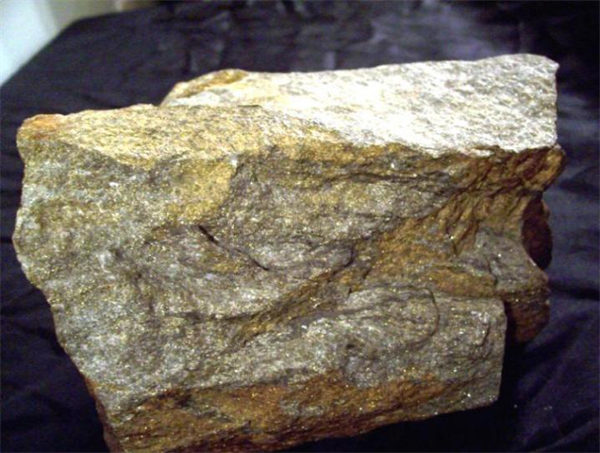Chalcopyrite is a type of copper sulfide. Compared to copper oxide, the beneficiation process of copper sulfide is generally relatively simple. However, the project also encountered the problem of substandard flotation recovery rate of chalcopyrite. During the beneficiation process of chalcopyrite, flotation and tailing should be carried out under rough grinding conditions as much as possible, which is a principle that must be followed. In addition, the correct selection of process flow and reagent system are two important factors that affect the flotation recovery rate.

There are three commonly used beneficiation processes for chalcopyrite:
The flotation recovery rate does not meet the standard, and our primary consideration is the grinding fineness. Because the grinding product particles are too coarse, the copper ore cannot be effectively dissociated, which affects the recovery rate; If ground too finely, it can easily cause overgrinding, affect the sorting process, and cause resource waste.
For chalcopyrite with coarse and uniform particle size, loose binding between copper minerals and gangue, and smooth and flat contact edges, a grinding flotation process can be adopted (suitable for small chalcopyrite flotation plants).
After a period of grinding, controlling the fineness of the grinding product to -200 mesh and reaching 50-60% can achieve monomer dissociation. After grinding, the ore enters the flotation process, and good flotation indicators can usually be obtained by selecting, scanning, and selecting (1-3 times).
For chalcopyrite with low raw ore grade and high processing capacity, a one-stage grinding flotation coarse concentrate regrinding process can be adopted.
The purpose of coarse concentrate regrinding is to obtain higher grade copper concentrate and improve the metal recovery rate of the final copper concentrate.
After a period of grinding to -200 mesh, it reaches 40% -70%. In the flotation process, a large amount of tailings are removed through rough selection and sweeping selection; The coarse concentrate obtained from flotation is reground and then subjected to two to three rounds of cleaning to obtain the final copper concentrate.
For chalcopyrite with uneven distribution of copper minerals, a two-stage grinding and two-stage (or one-stage) flotation process should be adopted. Because two-stage grinding can improve grinding efficiency while avoiding the occurrence of over crushing, it is better than directly grinding to the desired fineness using one stage of grinding. (mostly used in large and medium-sized chalcopyrite flotation plants)
The process flow of this process is: after two stages of grinding of chalcopyrite, the fineness of the grinding product can reach -200 mesh, accounting for 80% (or finer). After a stage of rough grinding, a portion of coarse-grained copper minerals can be flotation. The copper concentrate produced by flotation has a higher grade and can be directly used as a copper concentrate or entered into the final cleaning, or combined with the concentrate obtained after two stages of grinding and flotation to form the final concentrate.
The type and quantity of reagents added during the flotation process, as well as the location and method of dosing, are collectively referred to as the reagent system. The correct formulation of the reagent system has a significant impact on flotation indicators. The flotation reagent system for chalcopyrite is as follows:
Chalcocite is easy to use hydrophobic collectors such as xanthate and black powder for flotation, and has good floatability in various copper minerals. The main collector of chalcopyrite is xanthate. It has good floatability in both acidic and alkaline media. As the lattice energy of copper and sulfur crystals in chalcocite is small, the ionic radius of copper is small, and the ionic radius of sulfur is large, it is easy to be exposed to oxidation, so chalcocite is easier to be oxidized than chalcopyrite. After oxidation, more copper ions enter the pulp. The presence of these copper ions can activate other minerals or consume chemicals, making it difficult to separate.
Inhibiting chalcopyrite with hydroxide ions can still flotation at high pH, as ethyl xanthate copper is much more stable than copper hydroxide. The inhibitors of chalcopyrite include Na2SO3, Na2S2O3, K3Fe (CN) 6, and K4Fe (CN) 6, and a large amount of Na2S can also inhibit chalcopyrite.
The inhibitory effect of cyanide on chalcopyrite is weak because the copper ions on the surface of chalcopyrite continuously dissolve and react with cyanide, causing cyanide to fail. Only by continuously adding cyanide can the inhibitory effect be achieved.
Therefore, when encountering the problem of substandard flotation recovery rate of chalcopyrite, it is important to focus on two aspects: grinding fineness and reagent system. In the early stage of beneficiation experiments, the beneficiation process flow and reagent system of chalcopyrite should be formulated based on the results presented in the beneficiation experiments. The ideal flotation recovery rate can be achieved, ultimately obtaining the ideal grade of copper concentrate.